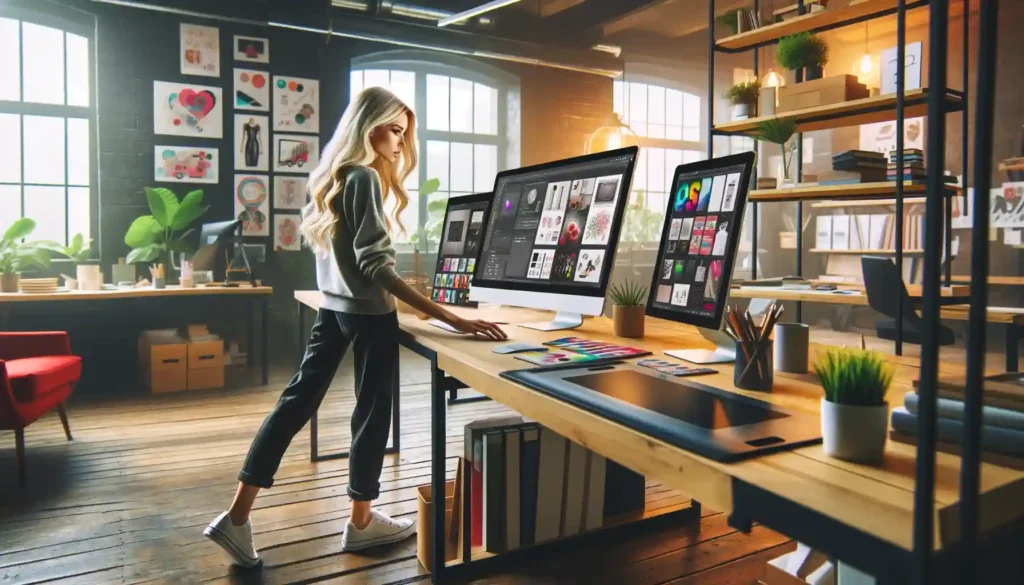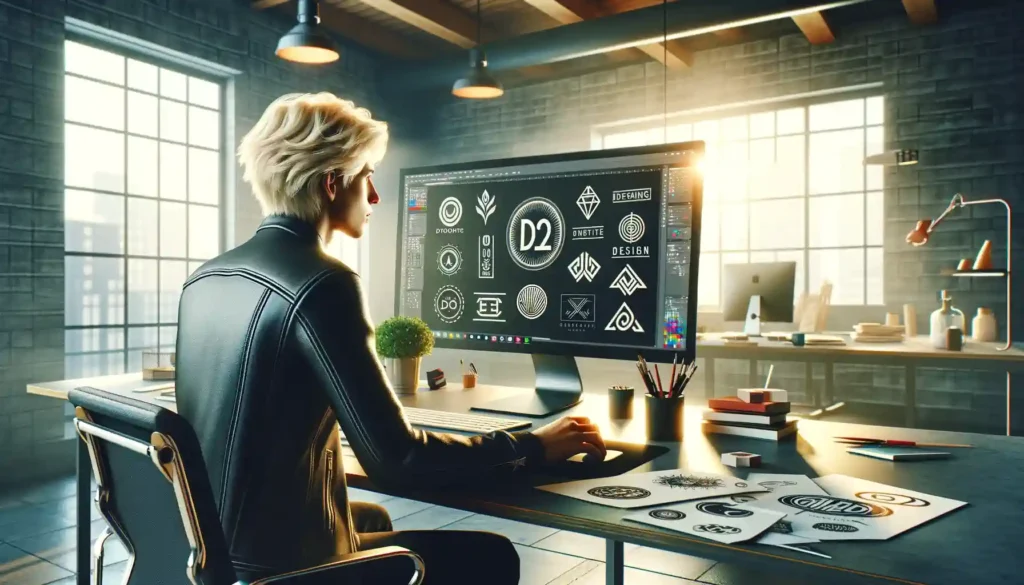The importance of a compelling and functional website for modern businesses cannot be overstated. As artificial intelligence (AI) continues to advance, its integration into web design represents a groundbreaking shift, offering a plethora of opportunities for businesses to enhance their online presence. This comprehensive exploration of AI-driven web design delves into how AI is revolutionizing the web development process, improving user experiences, and creating more efficient, personalized, and adaptive websites for modern businesses.

Unveiling AI in Web Design
AI-driven web design refers to the use of artificial intelligence technologies to automate and enhance the process of creating and optimizing websites. This involves various AI applications, including machine learning algorithms, natural language processing, and computer vision, to facilitate tasks that were traditionally manual and time-consuming. The implications of this technological evolution are vast, impacting not only the efficiency of web development but also the potential for personalized user experiences.
The Revolution in Web Development
AI transforms web development in several key ways, making it more accessible, efficient, and innovative:
Automated Design Processes: AI tools can automate many aspects of web design, from layout creation to color scheme selection. This automation significantly speeds up the development process, allowing for rapid prototyping and testing.
Adaptive Web Experiences: AI enables websites to learn from user interactions, adapting in real-time to offer personalized experiences. Websites can display content, offers, and layouts tailored to individual user preferences, increasing engagement and conversion rates.
Enhanced Usability Analysis: Through AI, businesses can analyze how users interact with their site more effectively. AI-driven analytics can identify usability issues, track user behavior patterns, and suggest improvements, enhancing the overall user experience.
SEO Optimization: AI tools can optimize website content for search engines more efficiently than ever. By analyzing search trends and competitor strategies, AI can suggest content adjustments and SEO strategies to improve search rankings.
Accessibility Improvements: AI can ensure web designs are more accessible to people with disabilities, automatically adjusting layouts or providing alternative text for images, thus broadening the reach of the website.
Transforming User Experiences
The advent of AI in web design is not just about making the life of developers easier; it’s also about transforming the user experience in profound ways:
Personalization: AI-driven websites can offer personalized experiences to users by analyzing their behavior, preferences, and interaction history. This level of personalization can significantly improve user satisfaction and loyalty.
Predictive User Interfaces: By predicting what a user might look for next, AI can create predictive user interfaces that enhance navigation and make website interactions more intuitive.
Voice-Activated Interfaces: Integrating AI with voice recognition technology allows for the development of voice-activated interfaces, making websites more accessible and enhancing user engagement.
Overcoming Challenges and Embracing AI in Web Design
While the integration of AI into web design offers numerous benefits, it also presents challenges such as ensuring data privacy, maintaining the human touch in design, and managing the ethical implications of AI decisions. Overcoming these challenges requires a thoughtful approach, emphasizing transparency, ethical AI use, and the blending of AI capabilities with human creativity and empathy.
The Future Is AI-Driven
The potential of AI-driven web design for modern businesses is immense, offering ways to streamline development processes, create more personalized and engaging user experiences, and ultimately, build more effective online presences. As AI technology continues to evolve, its role in web design is set to become even more significant, pushing the boundaries of what is possible and redefining the standards of digital experiences.
In conclusion, the possibilities of AI-driven web design represent a pivotal shift in how businesses approach their online strategy. By leveraging AI, companies can not only enhance their web development process but also create more dynamic, adaptive, and user-focused websites. As we move forward, embracing AI in web design will be key for businesses aiming to stay competitive and innovative in the digital landscape.

Can ChatGPT Build a functional Website? Exploring the Possibilities
In the ever-evolving landscape of technology, artificial intelligence (AI) has made remarkable strides, pushing the boundaries of what we once thought possible. One intriguing question that arises is: Can AI, particularly in the form of ChatGPT, build a real functioning website? Let’s delve into this topic and explore the exciting possibilities that lie at the intersection of AI and web development.
Understanding ChatGPT
ChatGPT, powered by OpenAI, is an advanced language processing AI that has proven its capabilities in various tasks, including answering questions, generating creative content, and providing valuable insights. However, building a functional website involves a complex interplay of design, coding, and user experience. Can ChatGPT handle such intricacies?
The Role of ChatGPT in Web Development
While ChatGPT cannot independently code and deploy a website from scratch, it can certainly play a significant role in the process. Here’s how:
Generating Code Snippets: ChatGPT can assist developers by generating specific code snippets based on their requirements. For example, it can create HTML, CSS, or JavaScript code snippets for various website components, saving developers time and effort.
Providing Design Suggestions: ChatGPT can offer design suggestions and layout ideas based on user input. By understanding the user’s vision, it can propose suitable color schemes, typography, and overall design aesthetics.
Debugging and Problem Solving: Developers often encounter bugs and issues during the website development process. ChatGPT can help diagnose problems by analyzing the code and suggesting potential solutions, aiding developers in troubleshooting.
Content Creation: ChatGPT can generate website content, including product descriptions, blog posts, and FAQs. While it may not replace the creativity of a human writer, it can certainly assist in generating initial drafts, which can be further refined by human editors.
Collaborative Web Development
The synergy between human expertise and AI capabilities is where the true potential lies. Developers can collaborate with ChatGPT, using its abilities as a powerful tool in their toolkit. By leveraging ChatGPT’s assistance, developers can expedite the coding process, enhance design elements, and streamline content creation.
Limitations and Human Intervention
It’s important to note that ChatGPT has limitations. It cannot replace the nuanced decision-making, creativity, and critical thinking skills of human developers and designers. While it can generate code snippets and offer suggestions, the final judgment and implementation require human intervention to ensure the website meets the desired standards of functionality and user experience.
Building Websites That Captivate and Convert Conclusion
Can ChatGPT Build a Website? In conclusion, ChatGPT can significantly aid in the process of building a real functioning website by providing code snippets, design suggestions, debugging assistance, and content creation support. However, it cannot create a fully functional real website like WordPress for example.

Elevate Your Online Presence with Logo Motion Graphics! 🌟
Looking to make a striking impact online? Search no more! Whether you need a sleek website or an eye-catching logo and motion graphics, we’re your one-stop solution.
✨ Website Wonders: Our expert developers craft visually appealing and user-friendly websites tailored just for you. From concept to launch, we ensure your online presence shines.
🚀 Motion Graphics Mastery: Want to add life to your content? Our motion graphics artists infuse energy and dynamism, making your message pop and captivate your audience.
Ready to transform your online presence? Contact us now for websites that wow and designs that dazzle! 🌟🎉
📞 Contact Us Today! 🌐 LogoMotionGraphics.com 📧 logoMotionGraphics@gmail.com
Let’s make your digital dreams a reality! 💻✨
Building Your Online Presence: How ChatGPT Can Help in Website Creation
The collaborative effort between AI and human developers remains crucial. By harnessing the power of ChatGPT as a valuable assistant, developers can enhance their productivity and create impressive websites, pushing the boundaries of what technology can achieve. The future of web development undoubtedly involves a harmonious blend of human creativity and AI assistance, and ChatGPT is leading the way in this exciting era of technological innovation.

The Human Touch in a Digital World: Why AI Can’t Fully Replace Web Developers
The question of whether Artificial Intelligence (AI) can replace web developers is multifaceted and requires a comprehensive examination of the current state of AI technology, the nature of web development, and the evolving demands of the digital world. This article seeks to explore these dimensions, considering the capabilities and limitations of AI in the context of web development, the unique skills and insights that human developers bring to the table, and the future trajectory of AI technologies in this field.
AI in Web Development: Capabilities and Limitations
AI has made significant inroads into web development, offering tools and technologies that automate certain tasks, enhance productivity, and even make design and development more accessible to non-experts. For example, AI-powered platforms can generate code from natural language instructions, suggest design improvements based on user engagement data, and automate testing and debugging processes.
However, these technologies have limitations. While AI can excel at tasks with clear rules and patterns, it struggles with the creative, innovative, and sometimes subjective decisions that are often required in web development. AI tools may suggest a design based on data, but they lack the intuitive grasp of human psychology and cultural nuances that expert human designers bring to their work.
The Unique Value of Human Developers
Human web developers possess a depth of understanding and creativity that AI currently cannot replicate. They are able to interpret complex client needs, navigate the subtleties of brand identity, and create innovative solutions to unprecedented problems. Human developers also play a crucial role in the iterative design process, using their judgement to refine and adapt their work based on feedback from real users.
Furthermore, web development is not just about building a site or an app but also about creating an engaging user experience, understanding the client’s strategic goals, and integrating the website or app seamlessly with other digital and physical customer touchpoints. These tasks require a level of empathy, strategic thinking, and cross-disciplinary knowledge that AI cannot yet match.
The Future Trajectory of AI in Web Development
As AI technology continues to evolve, it is likely that we will see more advanced and sophisticated tools that can handle increasingly complex aspects of web development. This progression may lead to a shift in the role of human developers rather than their replacement. Developers might focus more on high-level strategy, creative design, and complex problem-solving, while AI handles more of the routine coding and testing tasks.
It’s also worth considering the potential for new job roles that merge web development with AI expertise. These roles could involve training, supervising, and working alongside AI tools, ensuring that they are effectively integrated into the web development process and aligned with human goals and values.
Conclusion
While AI can automate certain aspects of web development and offer powerful tools to enhance productivity and creativity, it is unlikely to replace human web developers in the foreseeable future. The unique insights, creative problem-solving abilities, and strategic thinking of human developers are irreplaceable components of the web development process. Instead of viewing AI as a replacement for human skills, it may be more productive to see it as a complement that can augment human capabilities, leading to a future where web developers are freed from routine tasks to focus on the more creative and strategic aspects of their work.
As AI technology continues to evolve, the most successful web development projects will likely be those that effectively leverage the strengths of both AI and human developers, creating a collaborative ecosystem that maximizes innovation, efficiency, and user satisfaction.